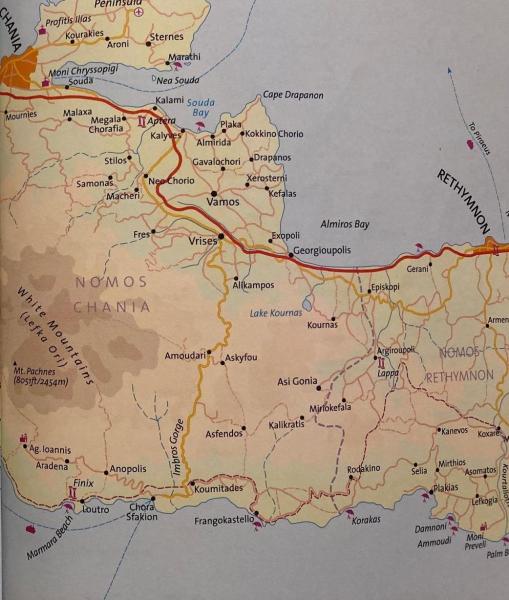- Read offline
- Access all content
- Use the in-app Map to find sites, and add custom locations (your hotel...)
- Build a list of your own favourites
- Search the contents with full-text search functionality
- ... and more!
South to Chóra Sfakíon
The rugged Eparchy of Sfakiá

Cut off by the White Mountains, the remote eparchy of Sfakiá was the cradle of the island’s most daring desperados, who clobbered each other in blood feuds but in times of need united to become Crete’s bravest freedom fighters. Now linked to civilization by a beautiful road, it still harbours dark tales of vendettas and honour killings.
South from Vríses to Chóra Sfakíon
From the well-watered crossroads of Vríses the main road south ascends the Krapí valley (prettier than it sounds) to the Lággos tou Katré, a 2km ravine known as the ‘Thermopylae of Sfakiá’. This was a favourite spot for a Cretan ambush, and spelt doom to 400 Turkish soldiers after the capture of Frangokástello (see below), and again in 1866 to a Turkish army fleeing south after the explosion of Arkádi.
Next comes the plateau of Askyfou, where the ruins of the fortress of Koulés cast a long shadow over the fields. In Askyfou itself, you can visit the War Museum, the work of Georgios A. Hatzidakis, who was ten years old when the Nazis invaded and made accumumlating artefacts from the war into his life’s work, now carried on by his son; there are some 2000 items— photos, weapons, flags, maps and more from the Battle of Crete, the occupation and resistance.
Images by AWI, Chris.urs-o, Maesi64, Marc-Lautenbacher, Miguel Virkkunen Carvalho, My old Cadogan guide, Olaf Tausch, Tango7174

